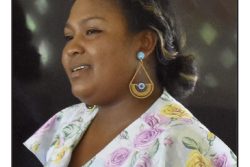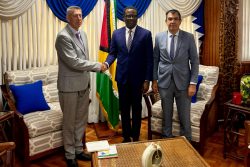Developing a sense of nationhood means developing a historical consciousness. Perceptions of the past inevitably change from one era to the next, but that does not mean that each generation should not attempt to come to its own understanding of the events and movements of earlier periods, or indiscriminately sweep away the cultural remains left behind by predecessors.
Generally speaking this nation has been cavalier about preserving the evidence of earlier centuries. There are several reasons for this, some of which, arguably, may be related to a lack of rootedness in the land and a preoccupation with migrating to other climes. More probably, however, it reflects a failure to evolve a historical tradition and a lack of awareness of what needs to be done in order to contribute to that tradition.
Nowadays the assumption is that discovering the past and preserving the evidence of that past is the business of institutions, particularly state institutions. As such it is thought that museums are the ones which should be collecting items related to the material heritage; the archives, the written records of official and sometimes private bodies; the libraries, the antiquarian heritage of printed works; and the National Trust – in addition to preserving the immovable heritage – information in any form on buildings and the like.
But nations which have a highly developed sense of historical consciousness, did not start with institutions, and did not leave activities connected to rescuing the past entirely to the state. In fact, in countries like the UK it was private individuals and later the societies they formed which pioneered the collection of antiquities of all kinds, and played a key role in raising the level of national consciousness about all things historical.
At present, there is an exhibition being held at the Royal Academy in England to celebrate the work of the Society of Antiquaries in London on the occasion of its tercentenary. While the Society itself was not formed until 1707, it was preceded by a number of private individuals who performed the same function, and who stimulated the awareness of the importance of antiquities to the nation.
In a written commentary on the exhibits, Bernard Nurse and David Gaimster identify a man named John Leland (1505-1552) as the first person to describe himself as an antiquary. What galvanised these early researchers/collectors into action, say the writers, was the destruction of antiquities caused by Henry VIII’s dissolution of the monasteries in the 1530s, and in the following century by the damage wrought by the Civil War. The first antiquaries began studying and recording monuments and tracing manuscript sources relating to property rights, among other things. Their aim was not to be “strangers in their own country.”
The Society of Antiquaries eventually went on to amass a formidable collection of manuscripts, prints, drawings, maps, paintings and artefacts, and in the era before photography commissioned accurate drawings for identification and comparison, as well as models of prehistoric sites, etc. One of those commissioned to record historic buildings, among other things, for the Society, was the artist JW Turner, and even the poet William Blake is thought to have undertaken some work on its behalf. What the Society of Antiquaries did was to function as a museum, national library and archives all rolled into one in the days when none of those institutions existed. And even after they came into being, the members still performed critical work in relation to the heritage of the nation, which they continue to do.
Guyana does not have a material culture of the kind to which the UK can lay claim, although it does have an ancient prehistoric Amerindian culture which is yet to be fully explored. Nevertheless, there is a heritage which it is important to recognize and preserve, and which contributes to the definition of the nation. The country certainly boasts the public institutions necessary for the preservation of that heritage, although some of these, in particular the Guyana National Archives at an earlier period, failed to discharge their mandate to the standard required. What has been equally distressing in more recent times has been the wholesale destruction of the rather remarkable architectural inheritance of Guyanese, and its replacement by some aberrant creations which are not only divorced from local architectural traditions, but which also transgress the principles of aesthetics.
State cultural institutions, of course, have by and large lacked the funding necessary to function at anything but a fairly basic level; in developing societies there is inevitably competition for limited resources. But as in the UK, ordinary citizens have a role to play in preserving the evidence of their past. Many houses of historical interest are in private hands, and a large number of families will have photographs of places and people in years gone by, and a smaller number, perhaps, of historical papers, drawings, artefacts and books of antiquarian significance. The most important thing is that people should recognize the value of these items, and should be prepared to try and look after them. As for the houses, it is for the government to explore innovative ways of giving concessions to owners when repairs have to be done. We should be aware of our past, and we too should not be ‘strangers in our own country.’







